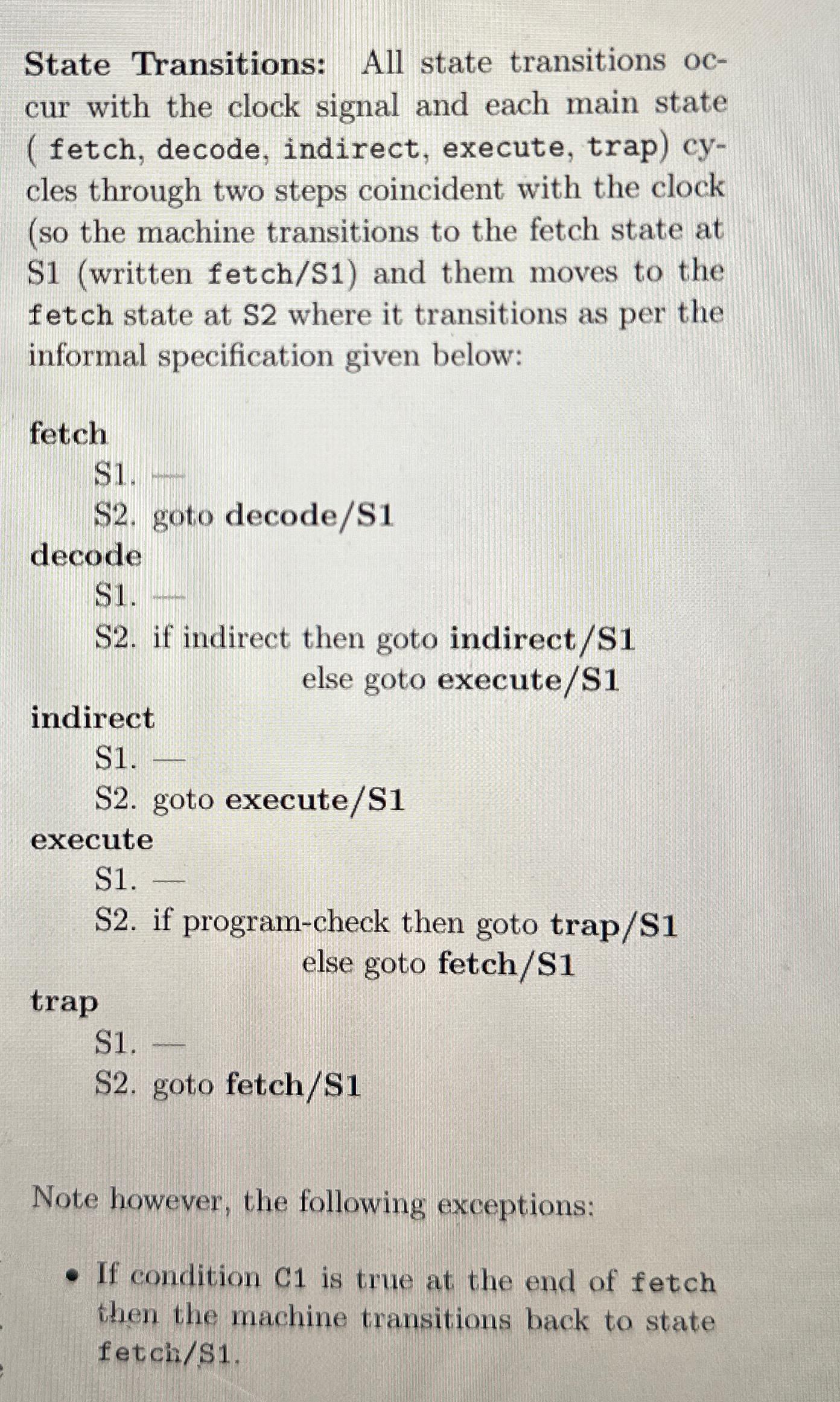Answered step by step
Verified Expert Solution
Question
1 Approved Answer
State Transitions: All state transitions occur with the clock signal and each main state ( fetch, decode, indirect, execute, trap ) cycles through two steps
State Transitions: All state transitions occur with the clock signal and each main state fetch, decode, indirect, execute, trap cycles through two steps coincident with the clock so the machine transitions to the fetch state at Swritten fetchS and them moves to the fetch state at S where it transitions as per the informal specification given below:
fetch
S
S goto decodeS
decode
S
S if indirect then goto indirectS
else goto executeS
indirect
S
S goto executeS
execute
S
S if programcheck then goto trapS else goto fetchS
trap
S
S goto fetchS
Note however, the following exceptions:
If condition is true at the end of fetch then the machine transitions back to state fetchS

Step by Step Solution
There are 3 Steps involved in it
Step: 1

Get Instant Access to Expert-Tailored Solutions
See step-by-step solutions with expert insights and AI powered tools for academic success
Step: 2

Step: 3

Ace Your Homework with AI
Get the answers you need in no time with our AI-driven, step-by-step assistance
Get Started


